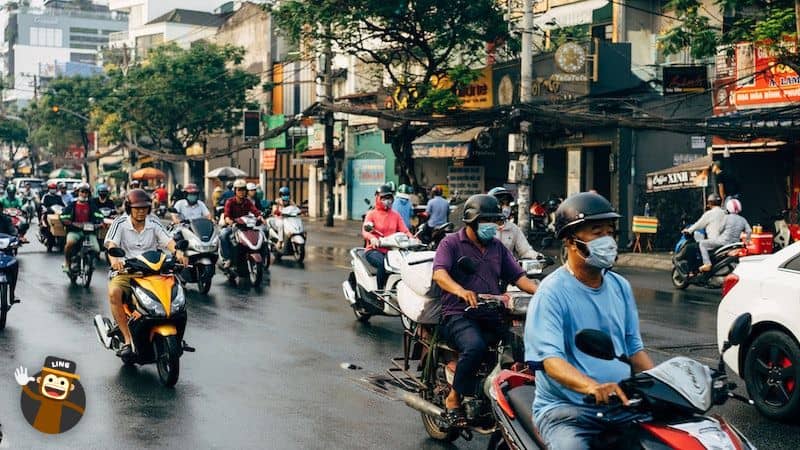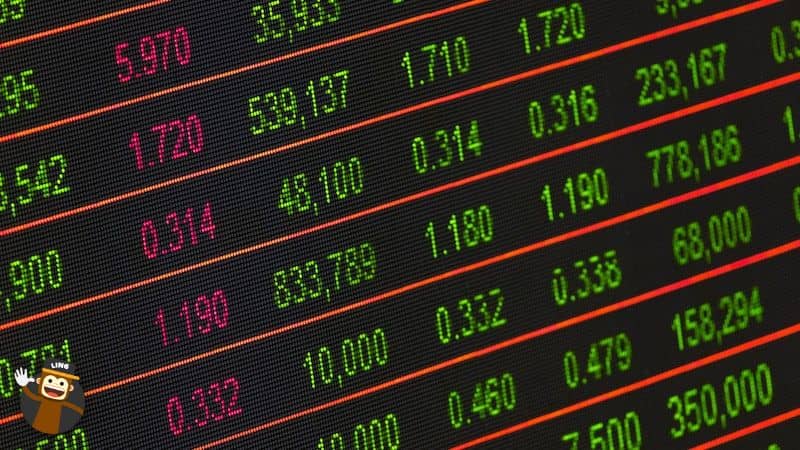The Vietnamese economy is in the midst of what many analysts have called a ‘miracle.’ Since 1986 and the Doi Moi reforms, foreign investment has skyrocketed (particularly from South Korea and China).
Cities like Ho Chi Minh City increasingly resemble megaliths in other Asian countries like Shanghai and Tokyo. Vietnam’s economic growth has led many developing countries to ask the question, is a socialist-oriented market economy the way forward?
This article tries to explain the intricacies of the Vietnamese economy and Vietnamese more generally. However, if you’re looking for a comprehensive app to learn the language thoroughly, you can’t go wrong with Ling.
Ling was designed with an express goal in mind- to offer a service comparable with Duolingo but for lesser-spoken languages. After years of compiling language courses designed by native speakers, Ling now offers 60 language courses for languages previously left out of other major apps.
Scroll to the final paragraph to find out more.
How Did The Vietnamese Economy Develop So Quickly Over The Last 30 years?

One stark fact about the Vietnamese economy is that in 1985 the GDP per capita rate was $231, making Vietnam one of the poorest countries in the world.
This all changed in 1986 with the economic plan Đổi Mới which translates as renovation. It encouraged foreign direct investment from countries outside the Soviet Block. It wasn’t called a revolution because the government didn’t want to completely abandon central control by the communist party.
If that sounds familiar, then it’s because China did exactly the same thing after the death of Mao Zedong.
In many ways, Vietnam has a love/hate relationship with China. There have been political tensions sometimes spilling into outright war, but at the same time, Vietnam relies heavily on trade with the superpower.
Vietnam’s three biggest industries are manufacturing, agriculture and tourism in its many regions. However, they do these things in a rather unique way.
In terms of agriculture, the terrain of Vietnam is only suitable for luxury crops like coffee, so they find themselves exporting to wealthy countries like China.
How Did The Pandemic Effect Economic Growth?

The most obvious example of the pandemic’s damaging effects was on the tourism industry, as it was for every country on earth.
However, all that being said, Vietnam has done much better than most countries in the world economy- both in its ability to keep functioning and control the spread of the virus.
In 2020 GDP growth halved and went down to 3%, but the fact that there was any sort of growth at all was impressive.
2021 was slightly more difficult as the government ran into a vaccine shortage problem, and growth was further reduced to 2.6%. Inflation remained at a steady 2%.
There were some concerns going into 2022 that potential closures would hamper further economic growth, but Vietnam did not enact the kind of draconian lockdown policies that made many china-watchers anxious.
Already in Q4 of 2021, Vietnam was showing signs of returning to pre-Covid rates of growth. The official rate of growth for Q4 in 2021 was 5.2%. Even better was Q2 in 2022, which measured at 7.7%
As of writing in August 2022, Vietnam looks in a solid position to hit its 7.5% growth target for the year; however, a number of things could still hamper the economic growth, including disruption of global supply chains and a new strain of coronavirus that sends the country into a full lockdown.
What’s Next For The Vietnamese Economy Going Forward?
Most economists say that for economic growth to continue at its current rate, Vietnam must avoid ‘the middle-income trap.’ This is when developing countries produce a robust middle class, and workers start demanding higher wages which thus drives up the price of previously cheap goods.
There is a lot of theory regarding how a country would escape the trap, and the most popular goes something like this: there needs to be a high level of exported goods and a focus on internal industry before a cheaper rival country can take away business from its export economy.
Carolyn Turk, the Vietnam World Bank director, has specified that to be successful, it must also invest heavily in higher education.
One aspect of a well-developed economy is the number of people in higher education. In Vietnam, that number in 2019 was 1.9 million; however, to match competitors in high-income countries, that number would need to double.
It still remains to be seen if Vietnam will join the countries at the top of the GDP leaderboard, but they are currently in a very good position.
Learn Vietnamese With Ling
The economic development in Vietnam has been stunning, and we want to deliver a language app just as powerful as this Asian Tiger.

One thing is for sure, Vietnam’s economy is only going to go from strength to strength, and one day the language could be as important to speak as Mandarin Chinese (a course we also offer).
Our language course is perfect for those of you that are looking for basic phrases like how to order in restaurants and how to check-in to hotels, but also for those of you who want to build Vietnamese into your life and want to learn everything from Vietnamese sports vocabulary and vocabulary related to politics and science.
If you liked this blog, check out some others in our long-running series, such as daily routines in Vietnamese and congratulations in Vietnamese.
Here at Ling, your education is our number 1 priority. If there are any other areas you’d like us to cover in the blog please let us know and we’ll get right to it!
Until next time!




































